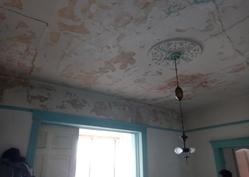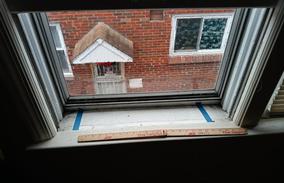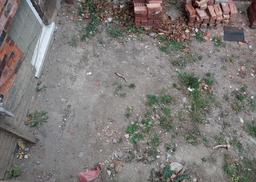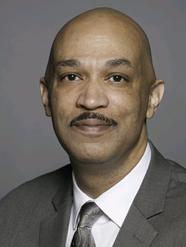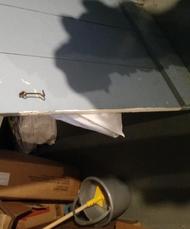Lead Clearance Requirements for City of Detroit Rental Property (2022 Revisions)
The most recent amendments were voted on October 26, 2021, approved by a City Council vote of 4-1 and made effective on January 3, 2022 (previous requirements can be found here).
The following is a summary of the basic requirements (with my comments following):
Interested in learning more?
Updated Detroit Ordinance provides a mixture of uncertainty, relief, and increasing lead compliance requirements for landlords
Clearance involves three basic elements : eliminating exposures to deteriorated lead-based paint, lead dust on floors and windows and bare soil with unacceptable or unknown lead content or the presence of paint chips.
Mr. David Bell, Director of the City of Detroit Building, Safety Engineering and Environmental Department
Mr. Bell gave the following reasons the City has loosened some requirements:
- Closer alignment with other major metro
cities rental property requirements
- No child EBLs linked to approved Rental Property
- increased enforcement attention for unregistered properties rather than Re-Evaluation of properties already certified
- Prior to occupancy, all rental property built prior to 1978 must be tested by proper HUD and State specified lead testing protocols including Lead-Based Paint Inspection and Lead Risk Assessment (see one exception below). If the Risk Assessment indicates no hazards, then no Lead Clearance is required. If lead hazards are identified, Lead Clearances must be performed until all hazards are determined to have been eliminated; OR,
Once compliance has been achieved, periodic self-monitoring Re-Evaluation is required. The interval is specified by the hazard control or abatement methods used to achieve clearance (my comments follow):
- A Risk Assessment is required after four years if hazards are corrected by abatement utilizing encapsulation or enclosure methods. If failures are noted with the integrity of any encapsulations or enclosures, the Owner must immediately schedule a Re-evaluation and take any actions necessary to remedy the LBP hazard. (This is decreased from every five years for enclosure and increased from two years for encapsulation. The specified extended time frames do not provide much incentive to Owners to perform more costly but durable encapsulation or enclosure remedies. )
Download the highlighted Revised Ordinance here.
- For those landlords showing good faith efforts at compliance using interim controls (stabilization and repainting), the ordinance will require risk assessment re-evaluations every three years. (This is a change from the annual requirement but as a practical matter the City was generally only enforcing this every three years except in unusual circumstances such as when the City was pursuing enforcement action for other matters such as blight).
- If two successful renewals of Certificates of Compliance occur prior to expiration, the period of expiration may be extended from three to five years. (Note the term “may” rather than “shall.” This is only a small incentive for landlords to work diligently towards compliance with hopes of a payoff beginning in 2028.)
- Landlords who have abated all lead and have passed a rental inspection will be eligible for a seven-year Certificate of Compliance. (It remains to be seen whether the City of Detroit will consider permanent enclosure as an abatement method. This includes for example installing drywall over old plaster or siding and trimming a garage).
- Under the newly implemented Section 8-15-84, landlords (or their staff) are now required to obtain HUD Visual Assessment Certification. Such certified personnel shall have completed a visual inspection annually, and, upon change of tenant, certify to the BSEED that a visual assessment has been completed for all units according to the HUD Visual Assessment Guidelines. If the visual inspection reveals deteriorated paint, significant dust or bite marks on a window sill, a Risk Assessment shall be performed for the property within one month. (Surprisingly, this additional seemingly cumbersome requirement has not been publicized. The certification is based on an online training course hosted by HUD. The online course takes about a half hour to 45 minutes to review and about a half hour to complete the exam. If you think you already know your stuff, you can skip to the exam page. The online exam forces you to enter the correct answer prior to proceeding rather than the graded exam model. The City has not indicated how this new requirement will be enforced.
Monitoring lead paint for damage can include watching for circumstances as mundane as an eyelatch scratching a painted door
- Records of Federal-mandated tenant disclosures can be requested by the City Inspector. This includes the notifications pertaining to the lead testing information upon lease renewals and the applicable notification under the USEPA RRP Rule. (I have never been contacted by a tenant asking about lead results in their unit. This suggests both that landlords aren’t offering the information and the tenants don’t care enough to ask for it or aren’t well versed enough in real estate law to understand the required disclosures. I asked Supervising Inspector Rushin about if and how this would be enforced and he declined to comment.)
The 2017 concession to landlords was removed that allowed the Risk Assessment to be deferred until unit turnover if a Lead Inspection finds no damaged LBP. (This wasn’t surprising considering there was lack of guidance as to how this would be implemented for multi-family properties and it’s a provision that could have been abused or easily misunderstood. This ” loophole” was never really publicized or explained. One savvy landlord I worked with was able to defer about $6000 in testing for several years on three apartment complexes he owned by taking advantage of this provision. I thought it was good idea because it incentivized and front-loaded proactive measures into the Lead Inspection. Anything that makes corrective actions happen faster should be a good thing in my opinion but apparently it was found to be problematic in its implementation.)
- If the property is receiving federal government assistance, the property can be considered compliant if it has passed a federal compliance inspection (e.g. Section 8) that includes lead paint requirements that "certifies that the properties inspected comply with the standards and requirements of this article. (This is a valuable loophole for Owners that is likely to be misunderstood. These federal requirements typically do not come close to meeting the standards in the Ordinance. In my experience, federal HUD inspections have included varying requirements such as only a LBP Inspection, only a Risk Assessment or merely a visual evaluation that all paint is intact. Nevertheless, its seems that this provision will be liberally interpreted to mean that any federal inspection approval will satisfy this condition.)
The following are additional Ordinance requirements are placed on BSEED rather than property owners:
- Annual reporting of EBL cases in rental property to City Council
- An extensive five year report profiling the economics and demographics of the Detroit rental property market including landlord profitability and compliance costs
- A database of rental properties including owner, agent and on-site staff contact information and compliance status
- Maintaining an escrow account and allowing tenants the ability to escrow rent owed to a non-compliant owner
Download the HUD Visual Assessment form here.
Want to learn more or download a pdf with this information for future reference? Download this information published in an article by the Michigan Association of Environmental Professionals.
Sounds pretty intensive? It might get worse. Maybe. EPA is considering drastically lowering the federal lead dust cleanup standards, which the State of Michigan and the City of Detroit would have to adopt. Reconsideration and update of the dust standards is expected in the Fall of 2024. Read more about my critical review of this proposal (Lowering Our Standards...).

